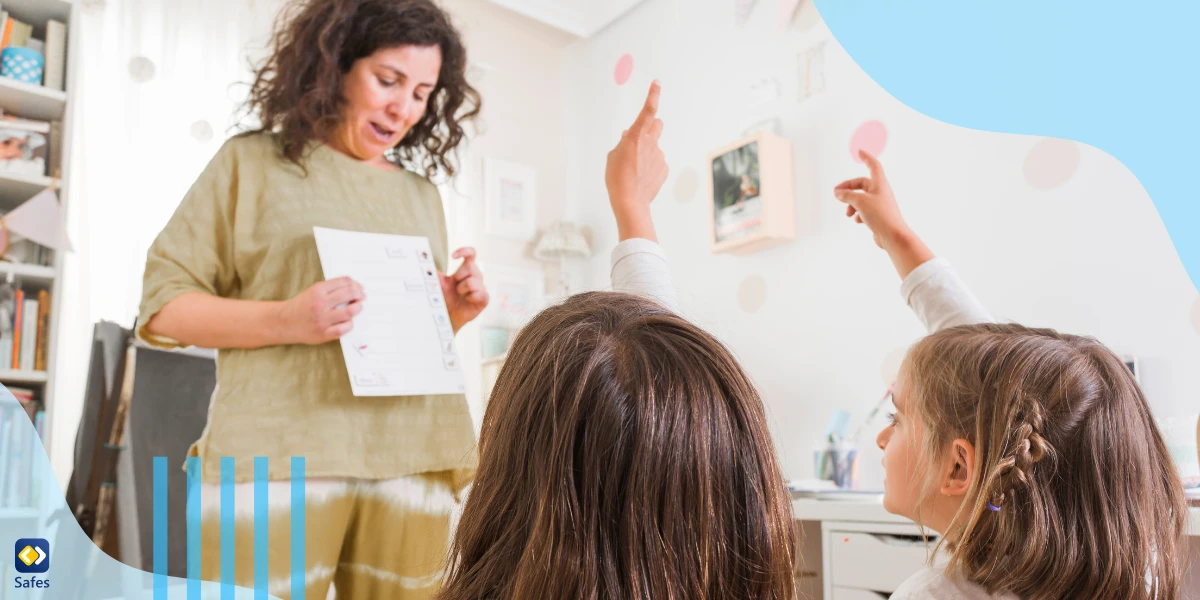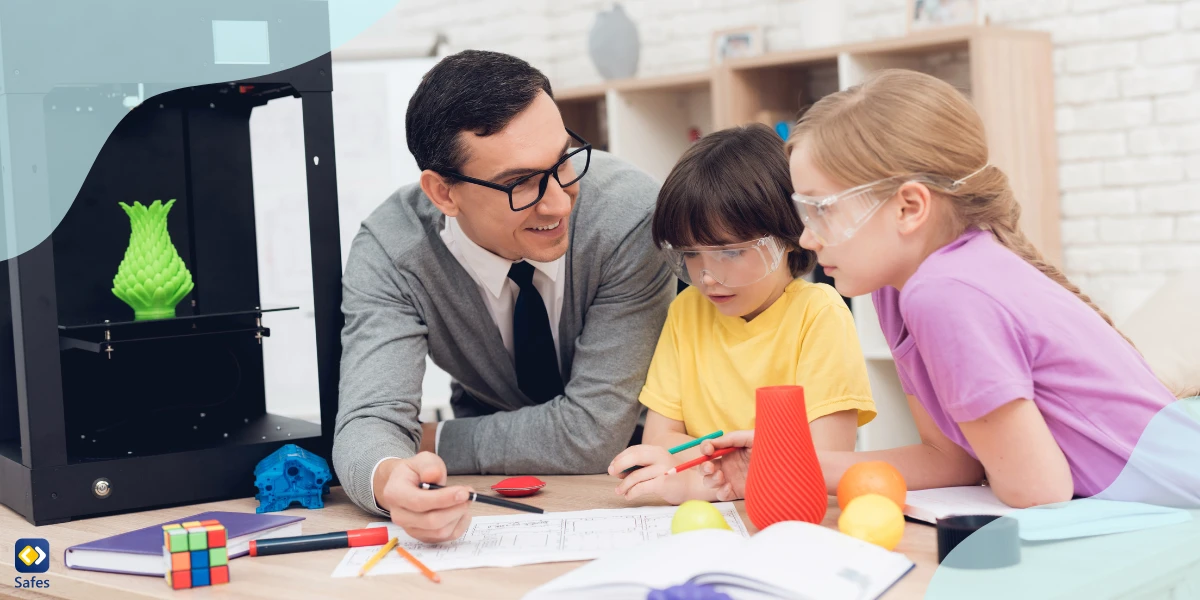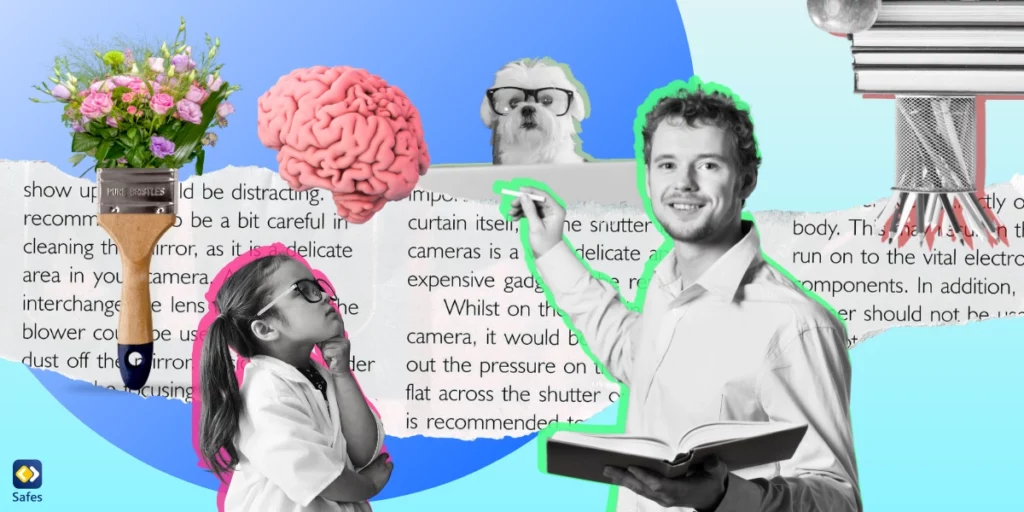Teachers have a great deal of control and influence over their students in the educational system. How students engage, their academic success, and their general well-being can all be significantly impacted by the way teachers behave in the classroom. This blog post aims to examine the significance of teachers’ actions and conduct in the classroom with a focus on the Murray Experiments‘ lessons for us today. Understanding the extent of our influence as educators can assist us in fostering a safe and supportive learning environment for our students.
Download and Start Your Free Trial of the Safes Parental Control App
How Teachers Influence Growth Mindset for Students
For their students, teachers act as role models, helping to mold their attitudes, beliefs, and behaviors. One cannot undervalue how a teacher behaves in relation to student engagement and learning. Students are more likely to be inspired and motivated to learn when teachers demonstrate their enthusiasm, passion, and dedication for their subject matter. Positive teacher-student interactions also promote a sense of community and emotional stability, both of which are necessary for students’ general academic success. Students are more likely to participate actively in class activities, ask questions, and take risks in their learning when they feel valued and supported by their teachers.
The strong association between teacher behavior and student engagement and academic outcomes is consistently highlighted by research. Students tend to be more engaged and achieve more when teachers exhibit strong instructional skills, give concise explanations, and foster a stimulating learning environment. Teachers can increase student motivation, creativity, and critical thinking abilities by fostering a positive classroom environment where students feel safe to express themselves, take risks, and work with peers.
The Murray Experiments: Illustrating the Influence of Misguided Behavior
The Henry Murray Experiments, carried out in the 1960s, provided insight into the significant impact that teachers’ actions have on students’ psychological health. The studies looked at how students’ academic performance and self-perception were affected by teachers’ critical and disparaging comments. The findings showed that students who received critical feedback from their teachers displayed lower self-esteem, decreased motivation, and lower academic achievement. These results highlight the value of creating an environment in the classroom where students feel respected, valued, and inspired to fulfill their potential.

The Do’s: Effective Teacher-Student Growth Mindset Activities
There are certain practices that teachers should adopt in order to create a secure and encouraging learning environment. Effective teacher-student interactions start with the development of trusting relationships. This can be accomplished by teachers by getting to know each of their students on an individual basis, demonstrating genuine interest in their lives, and fostering an environment in the classroom that values inclusivity, respect, and kindness. Teachers give students a sense of security and structure by setting up clear expectations and consistent routines, which enables them to concentrate on their learning.
Creating a Supportive and Inclusive Classroom Environment
Beyond academic instruction, supportive and inclusive classroom environments are important. It entails encouraging a feeling of acceptance and belonging among students. Teachers can accomplish this by valuing diversity, celebrating different viewpoints, and promptly addressing any instances of bias or discrimination. Students gain the ability to respect one another’s differences and contribute to a peaceful and respectful learning environment by being exposed to an environment that values empathy.
Active Listening and Empathetic Communication
Active listening and empathic communication are essential for productive teacher-student interactions. Teachers should give students the chance to voice their ideas, worries, and opinions and then genuinely and unprejudiced listen to them. Teachers who show empathy and understanding for their students’ experiences and emotions foster a safe environment where students feel valued and heard.
Providing Constructive Feedback and Encouragement
For students to develop and grow, constructive criticism is essential. Teachers should give students specific, useful feedback that explains their strengths and areas for development. Teachers can promote a growth mindset and build resilience in their students by emphasizing the process rather than just the result. Additionally, giving students sincere recognition for their efforts and successes encourages them and increases their motivation.
Fostering Collaboration and Peer Interaction
Collaboration in the classroom fosters interpersonal relationships, problem-solving abilities, and critical thinking. Students should have the chance to cooperate on projects, participate in group discussions, and work together. Teachers give their students the power to learn from one another and develop critical interpersonal skills by fostering a sense of community and promoting peer interaction.
The Don’ts: Pitfalls to Avoid in Teacher-Student Interactions
Recognizing and avoiding typical pitfalls in teacher-student interactions is equally crucial. Teachers can foster a safe and respectful classroom environment that supports student wellbeing by being aware of these potential pitfalls.
Avoiding Negative Language and Belittling Remarks
The use of derogatory language and disparaging remarks can have a negative impact on students’ confidence and self-esteem. Teachers should be careful with their language, making sure that it is uplifting, motivating, and supportive. Teachers can foster an environment that promotes growth and success by concentrating on constructive criticism and using language that inspires and motivates.
Minimizing the Use of Punishment and Shaming
Shaming and punishment are ineffective forms of discipline that can harm students’ emotional and psychological well-being. Teachers should give priority to strategies that encourage self-reflection, accountability, self-esteem, and positive behavior rather than using punitive measures. Teachers can promote an environment of empathy, understanding, and personal development by using restorative practices and giving students chances to learn from their mistakes. In turn, teachers will be responsible for building self-worth in kids.
Steering Clear of Favoritism and Bias
A welcoming and equitable classroom environment must be established by treating all students equally and impartially. Teachers need to be aware of any unintentional biases or favoritism that might influence how they interact with students. Teachers can create an environment that values each student’s unique contributions and potential by consistently applying rules and expectations to all students and addressing any biases that may exist.
Respecting Boundaries and Personal Space
Creating a secure and comfortable learning environment requires that everyone respect others’ boundaries and personal space. Teachers need to be careful when making physical contact with students and make sure that any such contact is appropriate and respectful. Teachers cultivate a climate of trust and mutual respect by establishing clear boundaries and modeling respectful behavior.
Being Mindful of Non-Verbal Cues and Body Language
Interactions between teachers and students can be greatly impacted by nonverbal cues and body language. Teachers should be conscious of their voice tone, posture, and facial expressions as these can send messages to students. Teachers can foster a friendly and encouraging learning environment by keeping an approachable and open body language and making supportive gestures.
How Can We Help Develop a Growth Mindset for Kids?
To have a greater impact on students, teachers must continually grow and improve. They should look at methods for developing professionally, such as evaluating one’s own teaching methods, looking for professional training and development opportunities, working with colleagues to share best practices, accepting criticism, and making changes. Teachers can improve their abilities and produce more memorable learning experiences for their students by adopting a growth mindset and actively seeking opportunities for growth.
Teachers and school officials can also use digital tools readily available to them in this day and age such as the Windows parental controls on school computers. A third-party parental control app like Safes School can help teachers manage their classrooms, keep their students focused, and overall, get their students to be more productive while keeping them safe in the digital world.

Conclusion
In conclusion, teachers’ behavior and actions have a big impact on the way their students behave. We can create secure and encouraging learning environments in the classroom by encouraging positive teacher-student interactions. We comprehend the repercussions of inappropriate behavior and the significance of developing strong relationships with our students by drawing on the knowledge gained from the Murray Experiments. Let’s embrace the power of our influence as educators, evaluate our methods, and work to develop nurturing learning environments in the classrooms where every student can succeed. By doing this, we help all of our students have a more promising future.
Your Child’s Online Safety Starts Here
Every parent today needs a solution to manage screen time and keep their child safe online.
Without the right tools, digital risks and excessive screen time can impact children's well-being. Safes helps parents set healthy boundaries, monitor activity, and protect kids from online dangers—all with an easy-to-use app.
Take control of your child’s digital world. Learn more about Safes or download the app to start your free trial today!




